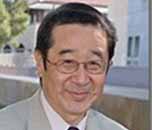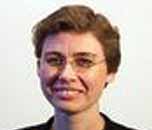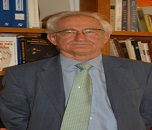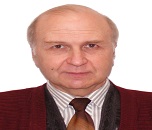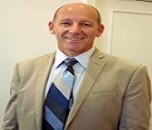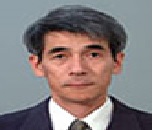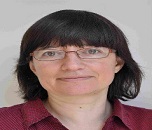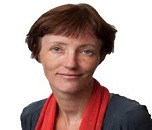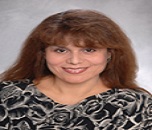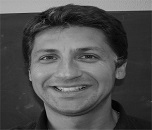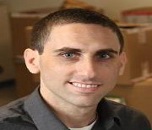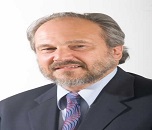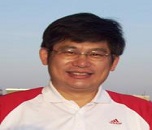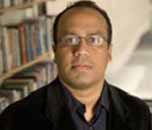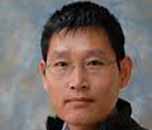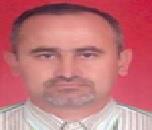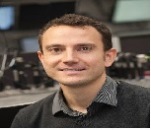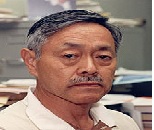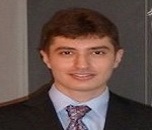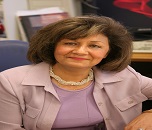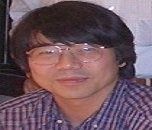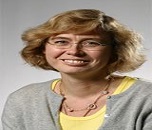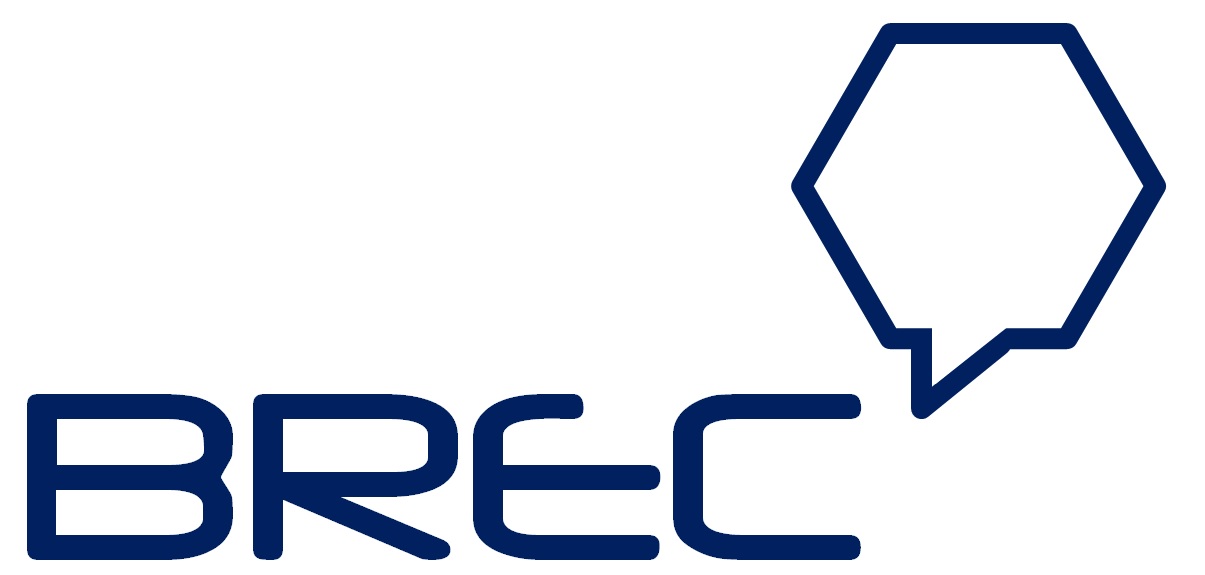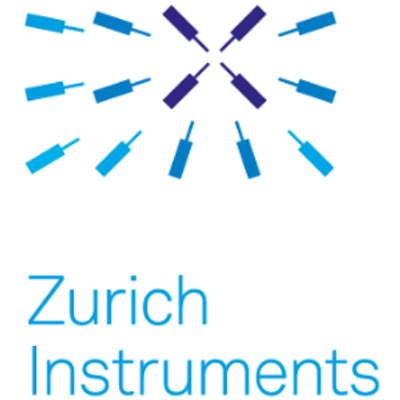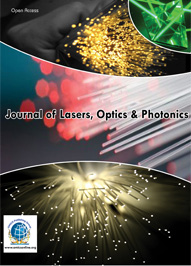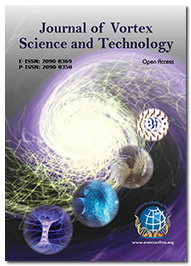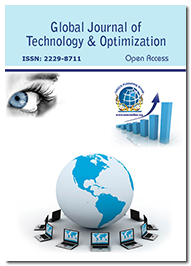Theme: Future Scope and Enhancement in Quantum Physics and Nuclear Engineering
Quantum Physics 2016
Conference Series cordially invites all the participants to attend "International Conference on Quantum Physics and Nuclear Engineering" during March 14-16, 2016 at London, UK. The main theme of the conference is “Future Scope and Enhancement in Quantum Physics and Nuclear Engineering”.
Quantum Physics is the body of scientific laws that describe the wacky behaviour of photons, electrons and the other particles that make up the universe. Quantum Physics is the branch of physics relating to the very small. It results in what may appear to be some very strange conclusions about the physical world.
Nuclear Engineering is the branch of engineering concerned with the application of the breakdown (fission) as well as the fusion of atomic nuclei and/or the application of other sub-atomic physics, based on the principles of nuclear physics.
In the sub-field of nuclear fission, it particularly includes the interaction and maintenance of systems and components like nuclear reactors, nuclear power plants, and/or nuclear weapons. The field also includes the study of medical and other applications of radiation, nuclear safety, heat transport, nuclear fuel and other related technology.
Track 1: Quantum States
In Quantum Physics, quantum state refers to the state of a quantum system. Quantum system can be either pure or mixed. A pure quantum state is represented by a vector, called a state vector, in a Hilbert space. If this Hilbert space is represented as a function space, then its elements are called wave functions. When pairs or groups of particles are generated or interact in ways such that the quantum state of each particle cannot be described independently instead, a quantum state may be given for the system as a whole then the phenomenon entanglement occurs. Quantum vacuum zero-point energy is the lowest possible energy that a quantum mechanical physical system may have. All quantum mechanical systems undergo fluctuations even in their ground state and have associated zero-point energy, a consequence of their wave-like nature. It is the energy of its ground state.
Related Conferences of Quantum States:
International Conference on Physics June 27-29 2016, New Orleans, USA; International Conference on Atomic and Nuclear Physics November 17-19 2016, Atlanta, USA; International Conference on Quantum Physics and Nuclear Engineering March 14-16 2016, London, UK; 5th International Conference and Exhibition on Lasers, Optics & Photonics December 01-03 2016 at Atlanta, USA; 2nd International Conference and Exhibition on Mesoscopic and Condensed Matter Physics October 27-29 2016, Chicago, USA; Benasque Workshop on "Quantum Science: Implementations" 10 Jul 2016-29 Jul 2016 Benasque, Spain; Conference on Synthetic Quantum Matter Nov 14–18 2016, Santa Barbara, USA; Seminar on Quantum Entanglement, New States of Matter, and Correlated Dynamics Jul 30–31 2016, Easton, USA; Workshop on Quantum Effects in Biological Systems Jun 6–9 2016, Durban, South Africa; Program on Synthetic Quantum Matter Sep 12–Dec 9 2016, Santa Barbara, USA.
Track 2: Quantum Mechanics Interpretation
An Interpretation of quantum mechanics is a set of statements which attempt to explain how quantum mechanics informs our understanding of nature. In physics, the locality principle states that an object is only directly influenced by its immediate surroundings. A physical theory is said to be a local theory if it is consistent with the principle of locality. The quantum action is an operator, although it is superficially different from the path integral formulation where the action is a classical function, the modern formulation of the two formalisms are identical. Interpretations of quantum mechanics attempt to provide a conceptual framework for understanding the many aspects of quantum mechanics which are not easily handled by the conceptual framework used for classical physics.
Related Conferences of Quantum Mechanics Interpretation:
International Conference on Quantum Physics and Nuclear Engineering March 14-16 2016, London, UK; International Conference on Physics June 27-29 2016, New Orleans, USA; International Conference on Atomic and Nuclear Physics November 17-19 2016, Atlanta, USA; 5th International Conference and Exhibition on Lasers, Optics & Photonics December 01-03 2016 at Atlanta, USA; 2nd International Conference and Exhibition on Mesoscopic and Condensed Matter Physics October 27-29 2016, Chicago, USA; Quantum Machine Learning Dec 12 2015, Montréal, Canada; Asia-Pacific Conference and Workshop on Quantum Information Science 2015 Nov 30–Dec 4 2015, Auckland, New Zealand; Workshop on Quantum Communications and Information Technology Dec 6–10 2015, San Diego, USA; Joint IAS-ICTP School on Quantum Information Processing Dec 7–18 2015, Singapore; 13th Asia-Pacific Physics Conference & 22nd Australian Institute of Physics Congress (APPC & AIP 2016) Dec 4–8 2016, Brisbane, Australia.
Track 3: Quantum Physics Formulation
Wave Particle Duality is the concept that every elementary particle entity exhibits the properties of not only particles, but also waves. It addresses the inability of the classical concepts "particle" or "wave" to fully describe the behaviour of quantum-scale objects. The WKB approximation is a method for finding approximate solutions to linear differential equations with spatially varying coefficients. It is typically used for a semi classical calculation in quantum mechanics. Wightman axioms are an attempt at a mathematically rigorous formulation of quantum field theory.
Related Conferences of Quantum Physics Formulation:
International Conference on Quantum Physics and Nuclear Engineering March 14-16 2016, London, UK; International Conference on Physics June 27-29 2016, New Orleans, USA; International Conference on Atomic and Nuclear Physics November 17-19 2016, Atlanta, USA; 5th International Conference and Exhibition on Lasers, Optics & Photonics December 01-03 2016 at Atlanta, USA; 2nd International Conference and Exhibition on Mesoscopic and Condensed Matter Physics October 27-29 2016, Chicago, USA; 58th Annual Meeting of the APS Division of Plasma Physics October 31-November 4, 2016, San Jose, CA; 13th Asia-Pacific Physics Conference & 22nd Australian Institute of Physics Congress (APPC & AIP 2016) Dec 4–8 2016, Brisbane, Australia; Workshop on Quantum Nonlocality, Causal Structures and Device-independent Quantum Information Dec 10–14 2015, Tainan, Taiwan; Joint IAS-ICTP School on Quantum Information Processing Dec 7–18 2015, Singapore; Australian and New Zealand School in Ultracold Physics Nov 30–Dec 11 2015, Dunedin, New Zealand.
Track:4 Quantum Field Theory
The infrared (IR) divergence only appears in theories with massless particles (such as photons). They represent a legitimate effect that a complete theory often implies. One way to deal with it is to impose an infrared cut off and take the limit as the cut off approaches zero. BRST quantization denotes a relatively rigorous mathematical approach to quantizing a field theory with gauge symmetry. Quantization rules in earlier QFT frameworks resembled "prescriptions" or "heuristics" more than proofs, especially in non-abelian QFT, where the use of "ghost fields" with superficially bizarre properties is almost unavoidable for technical reasons related to renormalization and anomaly cancellation.
Related Conferences of Quantum Field Theory:
International Conference on Physics June 27-29 2016, New Orleans, USA; International Conference on Atomic and Nuclear Physics November 17-19 2016, Atlanta, USA; International Conference on Quantum Physics and Nuclear Engineering March 14-16 2016, London, UK; 5th International Conference and Exhibition on Lasers, Optics & Photonics December 01-03 2016 at Atlanta, USA; 2nd International Conference and Exhibition on Mesoscopic and Condensed Matter Physics October 27-29 2016, Chicago, USA; International OSA Network of Students (IONS KOALA) Nov 23–27 2015, Auckland, New Zealand; Joint IAS-ICTP School on Quantum Information Processing Dec 7–18 2015, Singapore; International Conference on Quantum Foundation 2015 Nov 30–Dec 4 2015, Patna, India; Australian and New Zealand School in Ultracold Physics Nov 30–Dec 11 2015, Dunedin, New Zealand; Joint IAS-ICTP School on Quantum Information Processing Dec 7–18 2015, Singapore.
Track 5: Strings in Quantum Physics
In physics, a string is a physical object that appears in string theory and related subjects. Unlike elementary particles, which are zero-dimensional or point-like by definition, strings are one-dimensional extended objects. Computational physics is the study and implementation of numerical analysis to solve problems in physics for which a quantitative theory already exists. Super symmetry (SUSY), a theory of particle physics, is a proposed type of space time symmetry that relates two basic classes of elementary particles: bosons, which have an integer-valued "spin", and fermions, which have a half-integer spin. In physics, string theory is a theoretical framework in which the point-like particles of particle physics are replaced by one-dimensional objects called strings.
Related Conferences of Strings in Quantum Physics:
International Conference on Physics June 27-29 2016, New Orleans, USA; International Conference on Atomic and Nuclear Physics November 17-19 2016, Atlanta, USA; International Conference on Quantum Physics and Nuclear Engineering March 14-16 2016, London, UK; 5th International Conference and Exhibition on Lasers, Optics & Photonics December 01-03 2016 at Atlanta, USA; 2nd International Conference and Exhibition on Mesoscopic and Condensed Matter Physics October 27-29 2016, Chicago, USA; Joint IAS-ICTP School on Quantum Information Processing Jan 18–29 2016, Singapore; Winter Conference on Topological Quantum Matter: Progress and Applications Feb 15–21 2016, Aspen, USA; Post-Quantum Cryptography Winter School Feb 22–23 2016, Fukuoka, Japan; Seminar on Mechanical Systems in the Quantum Regime Mar 5–6 2016, Ventura, USA; Conference on Mechanical Systems in the Quantum Regime, Mar 6–11 2016, Ventura, USA.
Track 6: In Depth Quantum Mechanics
In quantum mechanics, an energy level is said to be degenerate if it corresponds to two or more different measurable states of a quantum system. Conversely, two or more different states of a quantum mechanical system are said to be degenerate if they give the same value of energy upon measurement. The exchange interaction is a quantum mechanical effect between identical particles. (Actually, one should better speak only of the exchange energy, or the exchange term, to avoid the incorrect idea that this effect corresponds to a classical force or potential.) In particle physics, quantum electrodynamics (QED) is the relativistic quantum field theory of electrodynamics. In essence, it describes how light and matter interacts and is the first theory where full agreement between quantum mechanics and special relativity is achieved.
Related Conferences of In Depth Quantum Mechanics:
International Conference on Physics June 27-29 2016, New Orleans, USA; 5th International Conference and Exhibition on Lasers, Optics & Photonics December 01-03 2016, Chicago, USA; 2nd Global Optometrist Meeting and Trade Fair on Laser Technology July 28-29 2016, Berlin, Germany; International Conference on Quantum Physics and Nuclear Engineering March 14-16 2016, London, UK; International Conference on Atomic and Nuclear Physics November 17-19 2016, Atlanta, USA; 46th Winter Colloquium on the Physics of Quantum Electronics Jan 3–8 2016, Snowbird, USA; 8th Annual Winter School for Quantum Cyber Security Jan 17–22 2016, Les Diablerets, Switzerland; Advances in Quantum Algorithms and Computation Mar 20–26 2016, Aspen, USA; Bristol Quantum Information Technologies Workshop Apr 6–8 2016, Bristol, UK; CLEO 2016: Laser Science to Photonic Applications Jun 5–10 2016, San Jose, USA.
Track 7: Nuclear Engineering
Nuclear engineering is the branch of engineering concerned with the application of the breakdown (fission) as well as the fusion of atomic nuclei and/or the application of other sub-atomic physics, based on the principles of nuclear physics. Nuclear medicine is a medical specialty involving the application of radioactive substances in the diagnosis and treatment of disease. Nuclear material refers to the metals uranium, plutonium, and thorium, in any form, according to the IAEA. This is differentiated further into "source material", consisting of natural and depleted uranium, and "special fissionable material", consisting of enriched uranium (U-235), uranium-233, and plutonium-239. Fusion is the process of combining two or more distinct entities into a new whole. Fission is a splitting of something into two or more parts.
Related Conferences of Nuclear Engineering:
International Conference on Quantum Physics and Nuclear Engineering March 14-16 2016, London, UK; Global Summit and Expo on Fluid dynamics & Aerodynamics March 07-09 2016, Madrid, Spain; International Conference on Mining and Metallurgy June 27-29 2016, Cape Town, South Africa; International Conference on Atomic and Nuclear Physics November 17-19 2016, Atlanta, USA; Annual Meeting on Rheology Nov 10-12 2016, Alicante, Spain; 3rd International Conference and Exhibition on Mechanical & Aerospace Engineering October 05-07 2015, San Francisco, USA; 4th International Conference and Exhibition on Materials Science & Engineering September 14-16 2015, Florida, USA; 2017 ANS Winter Meeting and Nuclear Technology Expo 12 Nov 2017 - 16 Nov 2017, Washington, DC, United States; 17th International Conference on Nuclear Engineering November 19 - 20, 2015 , Paris, France; 2016 ANS Winter Meeting and Nuclear Technology Expo 13 Nov 2016 - 17 Nov 2016, San Diego, California, United States.
Track 8: Interaction and Maintenance
A nuclear reactor, formerly known as atomic pile, is a device used to initiate and control a sustained nuclear chain reaction. A nuclear power plant is a thermal power station in which the heat source is a nuclear reactor. A nuclear weapon is an explosive device that derives its destructive force from nuclear reactions, either fission (fission bomb) or a combination of fission and fusion (thermonuclear weapon). Both reactions release vast quantities of energy from relatively small amounts of matter. Nuclear proliferation is the spread of nuclear weapons, fissionable material, and weapons-applicable nuclear technology and information to nations not recognized as "Nuclear Weapon States" by the Treaty on the Non-proliferation of Nuclear Weapons, also known as the Nuclear Non-proliferation Treaty.
Related Conferences of Interaction and Maintenance in Nuclear Engineering:
International Conference on Atomic and Nuclear Physics November 17-19 2016, Atlanta, USA; International Conference on Quantum Physics and Nuclear Engineering March 14-16 2016, London, UK; International Conference on Mining and Metallurgy June 27-29 2016, Cape Town, South Africa; Global Summit and Expo on Fluid dynamics & Aerodynamics March 07-09 2016, Madrid, Spain; Annual Meeting on Rheology Nov 10-12 2016, Alicante, Spain; 2017 ANS Annual Meeting 11 Jun 2017 - 15 Jun 2017, San Francisco, CA, United States; 2016 ANS Winter Meeting and Nuclear Technology Expo 13 Nov 2016 - 17 Nov 2016, San Diego, California, United States; NuMat 2016-The Nuclear Materials Conference 2016, 07 Nov 2016 -10 Nov 2016, Montpellier, France; WNE -World Nuclear Exhibition 2016, 28 Jun 2016 - 30 Jun 2016, Paris, France; 17th International Conference on Nuclear Engineering November 19 - 20, 2015 , Paris, France.
Track 9: In Depth of Nuclear Engineering
A nuclear reactor, formerly known as atomic pile, is a device used to initiate and control a sustained nuclear chain reaction. Nuclear reactors are used at nuclear power plants for electricity generation and in propulsion of ships. Heat from nuclear fission is passed to a working fluid (water or gas), which runs through turbines. Condensed matter physics is a branch of physics that deals with the physical properties of condensed phases of matter. Condensed matter physicists seek to understand the behaviour of these phases by using physical laws.
Related Conferences of In Depth of Nuclear Engineering:
International Conference on Quantum Physics and Nuclear Engineering March 14-16 2016, London, UK; Global Summit and Expo on Fluid dynamics & Aerodynamics March 07-09 2016, Madrid, Spain; International Conference on Mining and Metallurgy June 27-29 2016, Cape Town, South Africa; International Conference on Atomic and Nuclear Physics November 17-19 2016, Atlanta, USA; Annual Meeting on Rheology Nov 10-12 2016, Alicante, Spain; SNEC 2016 - Sustainable Nuclear Energy Conference 2016, 12 Apr 2016 - 14 Apr 2016, Nottingham, United Kingdom; NuMat 2016-The Nuclear Materials Conference 2016, 07 Nov 2016 -10 Nov 2016, Montpellier, France; WNE -World Nuclear Exhibition 2016, 28 Jun 2016 - 30 Jun 2016, Paris, France; 17th International Conference on Nuclear Engineering November 19 - 20, 2015 , Paris, France; MIIFED - IBF 2016 - Monaco-ITER International Fusion Energy Days (MIIFED) and the ITER Business Forum (IBF), 08 Feb 2016 - 11 Feb 2016, Munich, Monaco.
Track 10: Quantum Transport and Dissipation
Quantum dissipation is the branch of physics that studies the quantum analogues of the process of irreversible loss of energy observed at the classical level. Its main purpose is to derive the laws of classical dissipation from the framework of quantum mechanics. A dissipative system is a thermodynamically open system which is operating out of, and often far from, thermodynamic equilibrium in an environment with which it exchanges energy and matter. Quantum technology is a new field of physics and engineering, which transitions some of the stranger features of quantum mechanics, especially quantum entanglement and most recently quantum tunneling, into practical applications such as quantum computing, quantum cryptography, quantum simulation, quantum metrology, quantum sensing, and quantum imaging.
Related Conferences of Quantum Transport and Dissipation:
International Conference on Quantum Physics and Nuclear Engineering March 14-16 2016, London, UK; International Conference on Physics June 27-29 2016, New Orleans, USA; International Conference on Atomic and Nuclear Physics November 17-19 2016, Atlanta, USA; 5th International Conference and Exhibition on Lasers, Optics & Photonics December 01-03 2016 at Atlanta, USA; 2nd International Conference and Exhibition on Mesoscopic and Condensed Matter Physics October 27-29 2016, Chicago, USA; Benasque Workshop on "Quantum Science: Implementations" 10 Jul 2016-29 Jul 2016 Benasque, Spain; Conference on Synthetic Quantum Matter Nov 14–18 2016, Santa Barbara, USA; Seminar on Quantum Entanglement, New States of Matter, and Correlated Dynamics Jul 30–31 2016, Easton, USA; Workshop on Quantum Effects in Biological Systems Jun 6–9 2016, Durban, South Africa; Program on Synthetic Quantum Matter Sep 12–Dec 9 2016, Santa Barbara, USA.
Track 11: Latest Technologies, Innovations and Instruments
A Quantum computer maintains a sequence of qubits. A single qubit can represent a one, a zero, or any quantum superposition of those two qubit states; a pair of qubits can be in any quantum superposition of 4 states, and three qubits in any superposition. Nuclear reactors are used at nuclear power plants for electricity generation and in propulsion of ships. Heat from nuclear fission is passed to a working fluid (water or gas), which runs through turbines.
Related Conferences of Latest Technologies and Instruments:
International Conference on Quantum Physics and Nuclear Engineering March 14-16 2016, London, UK; International Conference on Physics June 27-29 2016, New Orleans, USA; 2nd Global Optometrist Meeting and Trade Fair on Laser Technology July 28-29 2016, Berlin, Germany; 5th International Conference and Exhibition on Lasers, Optics & Photonics December 01-03 2016 at Atlanta, USA; 2nd International Conference and Exhibition on Mesoscopic and Condensed Matter Physics October 27-29 2016, Chicago, USA; Program on Synthetic Quantum Matter Sep 12–Dec 9 2016, Santa Barbara, USA; SNEC 2016 - Sustainable Nuclear Energy Conference 2016, 12 Apr 2016 - 14 Apr 2016, Nottingham, United Kingdom; NuMat 2016-The Nuclear Materials Conference 2016, 07 Nov 2016 -10 Nov 2016, Montpellier, France; WNE -World Nuclear Exhibition 2016, 28 Jun 2016 - 30 Jun 2016, Paris, France; 17th International Conference on Nuclear Engineering November 19 - 20, 2015 , Paris, France.
Why to Attend?
The conference series look forward to welcoming you to an inspiring, educational and enjoyable program in UK, London with the intent of emphasizing the applications of Quantum Physics and Nuclear Engineering research to the improvement of the global strength.
Target Audience:
- Directors of companies
- Researchers
- Professors
- Lecturers
- Scientists
- Students
- Managers & Business Intelligence Experts
- Research students and Research Institutes
- Advertising and Promotion Agency Executives
"International Conference on Quantum Physics and Nuclear Engineering"
Theme: Future Scope and Enhancement in Quantum Physics and Nuclear Engineering
March 14-16, 2016 London, UK
Market Analysis of Quantum Physics:
According to a new research report published by Allied Market Research titled "Quantum Dot (QD) Market - Global Analysis, Growth, Trends, Opportunities, Size, Share and Forecast through 2020," the global quantum dots (QD) market accrued revenue of $316 million in 2013 and it is expected to grow to $5,040 million by 2020 at a CAGR of 29.9% during 2014-2020. . However, the volume consumption will grow a much faster rate of 116.5% during the same period to reach 72 ton in 2020. . However, the volume consumption will grow a much faster rate of 116.5% during the same period to reach 72 ton in 2020. Revenues for QD-enhanced products are potentially upwards of $7 billion by 2024 across displays, solid-state lighting, solar, biomedical, anti-counterfeiting and sensors sectors. The global QD market is expected to grow from $316 million in 2013 to $5,040 million in 2020 at a CAGR of 29.9% for the analysis period (2013-2020). Among geographic markets, North America has the highest revenue share due to early adoption. The region is expected to grow consistently and attain revenue of $1.92 billion by 2020. However, Asia-Pacific is expected to have the highest CAGR of 30.4% for the analysis period 2013-2020. The RTLS market is expected to grow at a CAGR of 20.7% for the analysis period of 2012 to 2020. In recognition of the importance of quantum technologies, the Chancellor announced new investment of £270m over the next five years at the 2013 Autumn Statement to accelerate the translation of leading quantum science into new products and services. The UK is ideally placed to be a world leader in the new quantum technologies industry and to command a significant proportion of a large and promising future market. The programmer is investing, as a major first step, £120 million in a national network of quantum technology hubs, involving17 universities, and with more than 50 partner organizations collectively contributing a further £60 million support.

Market Analysis of Nuclear Engineering:
The report "Nuclear Power Plant and Equipment Market by Reactor Type (PWR, PHWR, BWR, HTGR, FBR etc.), by Equipment Type (Island Equipment and Auxiliary Equipment) & Geography - Global Trends & Forecast to 2019", defines and segments the nuclear power market with analysis and forecasts of the global revenue. The global nuclear power and equipment market is estimated to grow from over $56.86 Billion in 2014 to nearly $67.23 Billion by 2019, at a CAGR of over 3.41%. The Chinese government plans to increase nuclear generating capacity to 58 GWe with 30 GWe more under construction by 2020. China has completed construction and commenced operation of 20 new nuclear power reactors over 2002-14, and some 30 new reactors are either under construction or likely to be so by mid-2015. UK government energy paper in mid-2006 endorsed the replacement of the country’s ageing fleet of nuclear reactors with new nuclear build, and four 1600 MWe French units are planned for operation by 2023. The government aims to have 16 GWe of new nuclear capacity operating by 2030. The average age of the world’s operating nuclear reactors to increase and by mid-2014 stood at 28.5 years. In 2013 alone, 32 GW of wind and 37 GW of solar were added to the world power grids. By the end of 2013, China had 91 GW of wind power and 18 GW of solar capacity installed, solar exceeding for the first time operating nuclear capacity.

Scope and Importance of Quantum Physics Research:
The theory of relativity describes the behavior of large everyday objects in the world around us. However this theory alone is not enough to describe things at a very small scale. At the level of atoms and sub-atomic particles objects behave very differently and quantum theory is an attempt to describe the behavior of matter and energy at this sub atomic scale. The exploration of light and the quantum properties of atoms is one of the most active fields of research in modern physics. This is cutting-edge frontier research in which a brand-new world is being explored. In recent years, there has been extensive development of the experimental techniques that are used to manipulate quantum-mechanical states.
Scope and Importance of Nuclear Engineering Research:
The provision of a sufficient amount of cost-effective and ecologically friendly sources of energy is a key problem to mankind. At that moment, the energy demand is met to a great extent by fossil fuels (coal, natural gas and oil). Since the discovery of nuclear fission more than 50 years ago, its use has become increasingly significant for the supply of electrical and thermal energy, and the importance of regenerative energy carriers will still be rising in the future. It is assumed that mankind's demand of primary energy will rise strongly during the next decades. Whereas today 5.8 billion people use up 13E9 tce, it is expected that in 2020 8 billion will consume 20E9 tce.
So obviously a massive expansion of nuclear energy will take place in the next decades. So achieve the necessary social acceptance of nuclear energy, its technical realization must not only exclude severe accidents that will vastly contaminate areas with radioactive material or evacuation necessities at all, but also protect population from any health hazard.
Why it’s in London
London is a leading global city, with strengths in the arts, commerce, education, entertainment, fashion, finance, healthcare, media, professional services, research and development, tourism, and transport all contributing to its prominence. It is one of the world's leading financial centres and has the fifth-or sixth-largest metropolitan area GDP in the world depending on measurement. London's largest industry is finance, and its financial exports make it a large contributor to the UK's balance of payments. Around 325,000 people were employed in financial services in London until mid-2007. London has over 480 overseas banks, more than any other city in the world. Over half of the UK's top 100 listed companies (the FTSE 100) and over 100 of Europe's 500 largest companies have their headquarters in central London. Over 70 per cent of the FTSE 100 is within London's metropolitan area, and 75 per cent of Fortune 500 companies have offices in London. A growing number of technology companies are based in London notably in East London Tech City, also known as Silicon Roundabout. In April 2014, the city was among the first to receive a GeoTLD.
Target Audience
· Directors of companies
· Researchers
· Professors
· Lecturers
· Scientists
· Students
· Managers & Business Intelligence Experts
· Research students and Research Institutes
· Advertising and Promotion Agency Executives
Members Associated with Quantum Physics Research:

Major Research Institutes:
• American Nuclear Society (United States)
• Atomic Energy of Canada Limited
• British Energy (United Kingdom)
• Canadian Nuclear Safety Commission (Canada)
• Egyptian Atomic Energy Authority
• European Nuclear Education Network (Europe)
• EURATOM (Europe)
• Federal Atomic Energy Agency (Russia)
• Nuclear Energy Institute (United States)
• Nuclear Industry Association (United Kingdom)
• Russian Federal Atomic Energy Agency (Russia)
• United Kingdom Atomic Energy Authority (United Kingdom)
• Department of Energy (United States)
• World Nuclear Association (International
Members Associated with Nuclear Engineering Research

Top Universities
In UK
• University college London
• Queen Mary university of London
• Imperial college London
• University of London
• University of oxford
• University of Manchester
People Researching on Nuclear Engineering:

Major Research Institutes:
• American Nuclear Society (United States)
• Atomic Energy of Canada Limited
• British Energy (United Kingdom)
• Canadian Nuclear Safety Commission (Canada)
• Egyptian Atomic Energy Authority
• European Nuclear Education Network (Europe)
• EURATOM (Europe)
• Federal Atomic Energy Agency (Russia)
• Nuclear Energy Institute (United States)
• Nuclear Industry Association (United Kingdom)
• Russian Federal Atomic Energy Agency (Russia)
• United Kingdom Atomic Energy Authority (United Kingdom)
• Department of Energy (United States)
• World Nuclear Association (International
People Researching on Quantum Physics

Funds grant for different sectors relevant to the Quantum physics area:

Research Universities in UK:

Funds grant for different sectors relevant to the Nuclear Engineering area:

Research Universities:

Universities Researching on Quantum Physics and Nuclear Engineering around the Globe:

Market Report:
Quantum technologies are considered to be those that harness quantum physics to gain a functionality or performance which is otherwise unattainable – the function of quantum technologies are derived from science that cannot be explained by classical physics, such as Newton’s Laws of motion, thermodynamics, or Maxwell’s equations of electromagnetism.
The emerging quantum technologies of the early 21st century rely on more subtle, less familiar aspect of quantum mechanics. They offer a major opportunity for the UK, thanks to the competitive global position of the UK research base, and the willingness of key partners across the UK to work together. The UK government is investing £270 million in these novel quantum technologies, aimed at realising their potentially transformative impact across business, government and society. Total theme funding, £155.6 million (3.44% of whole portfolio) across research areas. There are 39 grants in the Quantum Technologies.
Nuclear energy research in the UK had declined seriously during the 1990s. In recent years, it has been recognised that nuclear power has an important role to play in the UK's future low-carbon energy mix and the government has recently paved the way for new nuclear build.
The portfolio spans the entire nuclear energy remit and there is now significant UK capability. There are two doctoral training centres and significant research activity at a number of UK universities. University of Manchester and Imperial College London are home to major, internationally recognised research capabilities.
The UK is also gaining international recognition once again for its nuclear expertise. An on-going programme of collaboration with India is already underway and further activities are being developed with other countries. Nuclear energy research is to continue to support a balanced portfolio of research, to support the supply of skilled people and to maximise impact through close links with users and international partners. The format and focus of specific activities will be developed with consideration of a number of inputs, including the Nuclear Research Roadmap.
Dear Colleagues,
Conference Series is proud to host the "International Conference on Quantum Physics and Nuclear Engineering" during March 14-16, 2016 at London, UK. The theme of Quantum Physics 2016 is ‘Future Scope and Enhancement in Quantum Physics and Nuclear Engineering.
On behalf of many professionals and volunteers organizing the Quantum Physics and Nuclear Engineering, we are pleased to welcome you to London. This conference is the world’s premier scientific and engineering forum for quantum physics, and focusing on the most exciting subjects in physics, where the latest advances in Quantum Physics and Nuclear Engineering will be reported. Our mission, among others, is to provide you with opportunity of thorough discussions on “Future Scope and Enhancement in Quantum Physics and Nuclear Engineering”. For the purpose of stimulating a development of these subjects, we have prepared for following 11 tracks: Quantum Science, Quantum States, Quantum Mechanics Interpretation, Quantum Physics Formulation, Quantum Field Theory, Strings in Quantum Physics, In Depth Quantum Mechanics, Quantum Transport and Dissipation, Nuclear Science, Nuclear Engineering, Interaction and Maintenance, In Depth of Nuclear Engineering, Latest Technologies Innovations and Instruments.
Since this conference covers very global aspects on physics from very fundamental issue to practical application of the principle of physics, anyone interested in future progress of quantum physics should not miss.
Leading-edge scientific progress will be reported in diligently selected papers consisted of key note address, invited and regularly contributed papers
We look forward to seeing you in London and sharing a very exciting experience with you.
yours sincerely,
Prof. Osamu Hirota
Conference Chair
Conference Highlights
- Quantum States
- Quantum Mechanics Interpretation
- Quantum Physics Formulation
- Quantum Field Theory
- Strings in Quantum Physics
- In Depth Quantum Mechanics
- Interaction and Maintenance in Nuclear Engineering
- Quantum Transport and Dissipation
- Latest Technologies, Innovations and Instruments
- Quantum Science
- Nuclear Science
To share your views and research, please click here to register for the Conference.
To Collaborate Scientific Professionals around the World
| Conference Date | March 14-16, 2016 | ||
| Sponsors & Exhibitors |
|
||
| Speaker Opportunity Closed | Day 1 | Day 2 | Day 3 |
| Poster Opportunity Closed | Click Here to View | ||




